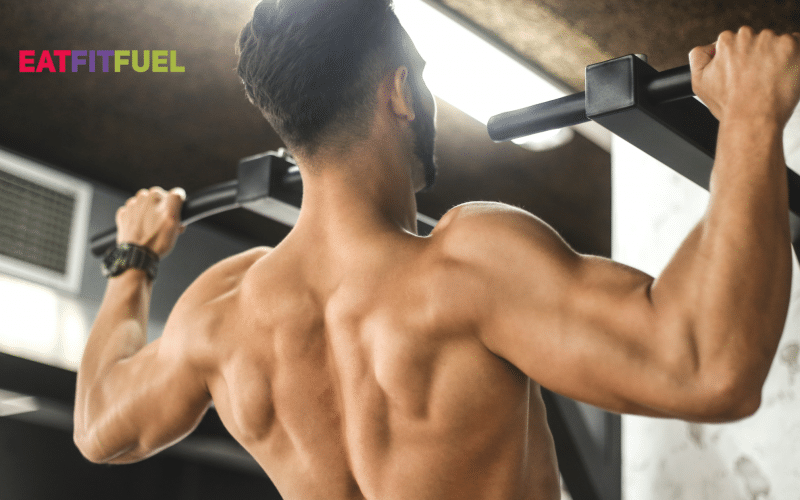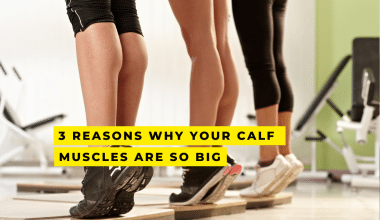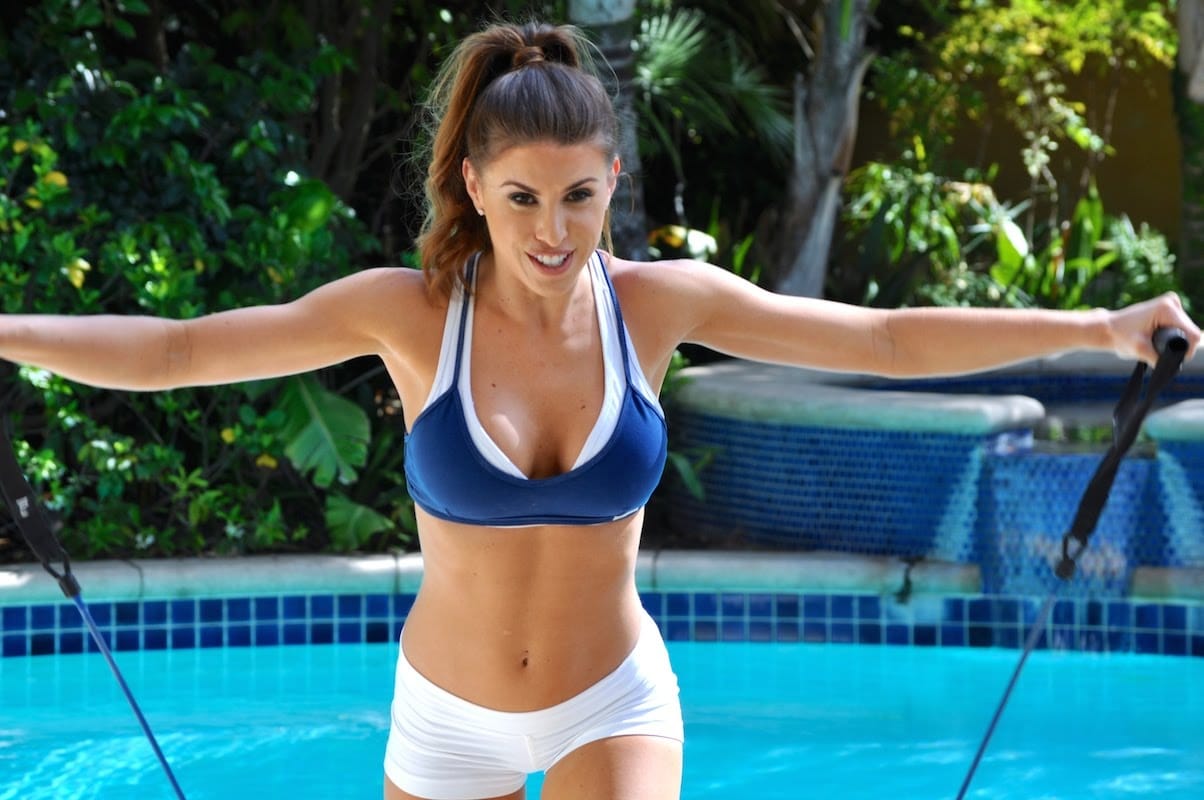Do you know what muscles do pull-ups work? If you have ever tried pull-ups, you know how challenging they can be. These types of exercises give you a real idea of how much weight you carry with you on a daily basis.
Yet, the effort is well worth it due to the tons of functionalities you get. Indeed, this is the perfect exercise to test your mettle as a fitness enthusiast. It could explain why pull-ups are such common endurance tests for military training.
The concept behind pull-ups is simple. The idea is to raise your body off the ground using a bar above your head. Gymnasts make it look easy, but that comes from years of active training.
So, why are pull-ups such a must-achieve goal for so many gymgoers? Well, perfecting the exercise will give you such amazing results. That is because you engage multiple muscle groups from the over 600 groups in your body. So, it helps you know what muscle pull-ups work.
How To Do the Perfect Pull Up
Before we delve into what muscle pull-ups work, it helps to know how to do the perfect pull-up. You will need a sturdy pull-up bar to bear your body weight.
- Start by warming up your muscles by stretching. That will help increase efficiency and flexibility during the exercise session.
- Stand with your feet shoulder-width apart.
- Make sure that your palms are facing outwards, away from your body. If you were doing a chin-up, the palms would face toward your body.
- With your hands a bit wider than shoulder-width apart, grasp the bar, ensuring full body extension.
- With the help of your core muscles, start to pull your body off the ground. Now, bend the elbows and pull the shoulder blades down and back.
- Make sure that your chin is tucked toward the chest.
- Raise your body until the chest reaches the bar.
- At the top, pause briefly, then slowly lower yourself back to the floor. Do not let go of the bar so that you don’t drop suddenly. Rather, maintain maximum control to keep working the muscles. Also, refrain from resorting to momentum or swinging to get the right movement.
- Try as many reps as you can. Over time, as you get stronger, you will be able to achieve more pull-ups.
At the end of the reps, you should feel the effects of the exercise on your muscles. So, let’s see what muscle do pull-ups work.
1. Latissimus Dorsi or Lats
The latissimus are the main muscles that pull-ups work.
The lat muscles are the largest in the body and run across your back, down the sides, and the shoulder blades. Indeed the name is a combination of latissimus, which stands for broad, and dorsi or back.
Science shows that the back and shoulder muscles find frequent use in the day to day activities. Even lifting that coffee mug to your lips for the daily caffeine shot engages these muscles. That is why it is a good idea to incorporate back and shoulder workouts into your exercise routine.
The lats are critical for the downward movement of your arms and the stabilization of shoulder joints. So, when you bend your elbows and start to pull your body off the floor, the lats kick in.
We discussed pulling the shoulder blades back and down from the pull-ups steps we shared above. What you are doing is engaging the lats for the most effective workout.
2. Triceps and Biceps
The biceps sit on the frontal part of the upper arm. Many bodybuilders aim for bulging biceps because they are quite visually impactful. The same applies to anyone who is hitting the gym to bulk up. There is something exciting about the bicep starting to harden and show up.
During a pull-up, the biceps are critical for achieving the elbow bend. They also assist with forearm rotation and raising the arms. With proper technique, you may find it easier to pull your body up without feeling the full impact of your weight. And, if you stick to the pull-up routine, expect to see some amazing transformations starting to take place.
The triceps step in during the ascent when you need maximum control, so you do not drop suddenly. They are critical for the lengthening and opening up of the elbow joints.
3. Pectoral Muscles or Pecs
The pecs are another bragging point for many gym enthusiasts. You know how good the chest looks once you start to see the workout results. All this is thanks to the chest muscles, the pecs. There are three, namely the pectoralis major, minor, and subclavius.
Pull-ups allow you to get an effective pec workout, much like they do for the back muscles.
The pec muscles help with stabilizing the shoulder joints during the pull-up. Beyond that, they help with upper arm and elbow down movement. You get the most active pec workout when lowering yourself back to the ground.
4. Deltoids
Deltoids sit right at the tops of the shoulders. They come in threes, comprising the rear, side, and front deltoids. The trio is critical in stabilizing the arms as you raise them during the pull-up.
The deltoid workout occurs due to horizontal movement, rather than frontal arm movement. Let’s go back to the pull-up steps we talked about.
Remember we shared that you should start with your arms slightly wider than shoulder-width apart. As you pull yourself up, you maintain the horizontal hold for the best pull-up workout.
5. Teres Major
The teres major muscles attach from the shoulder blades (scapula) to the upper arms (humerus). It serves some critical roles during pull-ups, such as:
- Giving the shoulder joint stability
- Rotating the arms
- Adducting or pulling down the arms
The teres major muscles aid the lats during pull-ups. That means you give them a pretty good workout with every pull-up.
6. Trapezius or Traps and Rhomboids
The trapezius muscles allow for head and shoulder movements. This large muscle is the one that connects your neck to the shoulder blades. It starts higher up the middle part of the back, out to the shoulders, then narrows toward the neck. Indeed, the trapezius gets its name from the trapezoid shape it has.
The traps are also quite helpful to the lats when stabilizing the shoulder blades during the workout. But, the traps get a lot of help from another muscle group, the rhomboids.
The rhomboids lie behind the trapezius muscles. They give that extra security to the shoulder blades. Further, they make movements like rotations more efficient. The same applies to the elevation and adduction of the scapula.
7. Core Muscles
The core comprises several muscles that are critical to doing pull-up exercises. These include the abdominals, obliques, diaphragm, and lower back muscles. They help with the following:
- Ensuring stability, which helps to avoid unnecessary movements, like swinging or giving in to momentum. As we mentioned, ultimate control is critical when doing pull-ups
- Force transfers from the strongest to weaker parts of the body. The stronger your core, the more force you generate to lift and lower your body.
- A strong core helps maintain proper form during exercises. You can also stick to the right techniques, and avoid injury during the workout session.
Here is a tip worth implementing. Diversify your core workouts with chest workouts to maximize the different muscle groups. You burn more calories and fat by using more energy.
Frequently Asked Questions
Do pull-ups help build muscle?
Pull-ups are a basic strength training exercise that can help you build muscle using body weight and a sturdy bar. While they require upper body strength, core stability, and coordination, fitness experts say that even beginners can progress to full pull-ups.
Can pull-ups give you abs?
Pull-ups strengthen and sculpt your shoulders, forearms, and chest in addition to your back. When performed effectively, they also engage your abs muscles. This includes your deep transverse abdomens, making them an excellent exercise for targeting many of the major muscles in the body.
Are pull-ups harder than push-ups?
Pull-ups are difficult when compared to push-ups. Pull-ups require you to pull your entire body weight to the bar while your body hangs under your arms. Also, during pushups your feet are still on the ground and your hands do not support your entire weight.
Final Thoughts
We have looked at what muscle do pull-ups work in this article. It is pretty clear that pull-ups are excellent for working out muscles. This is because you can work on so many during each session.
But, what you will also realize is that no muscle works in isolation. Indeed, it is like a well-choreographed orchestra where each instrument, no matter how small, contributes to the final output.
Please make sure to get professional advice if you are a beginner. You can avoid nasty injuries while perfecting your pull-up technique.






